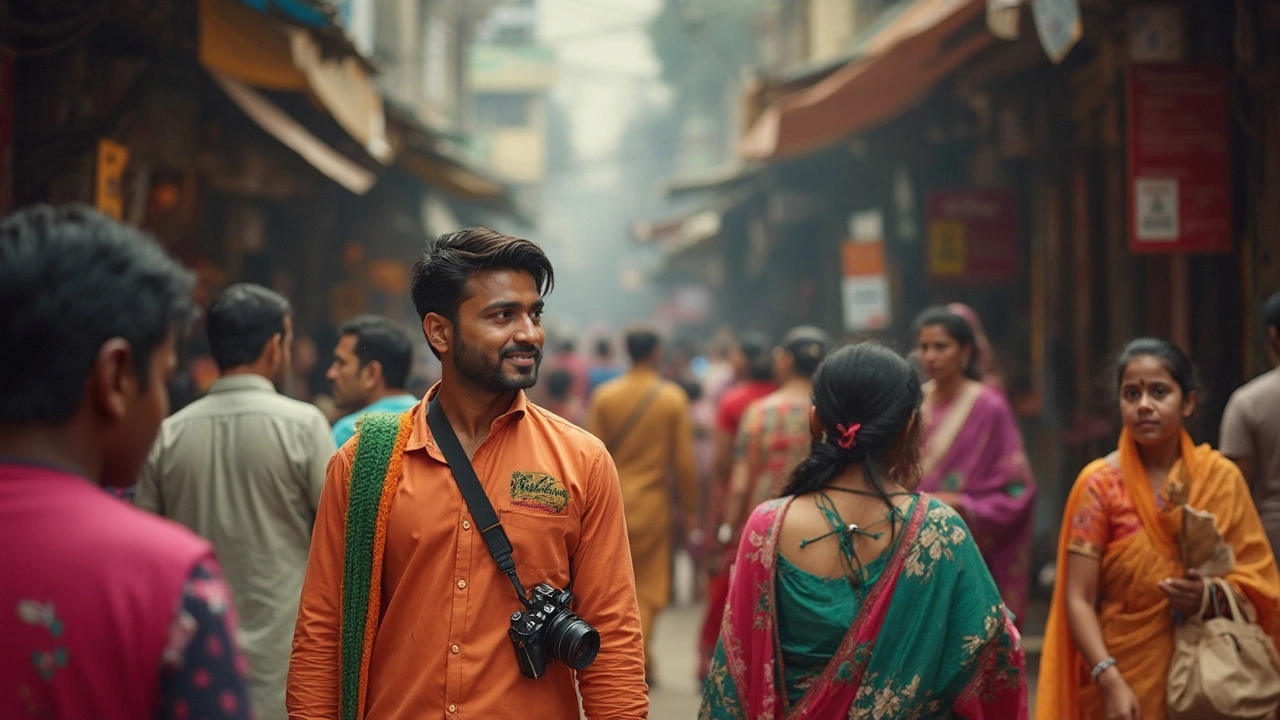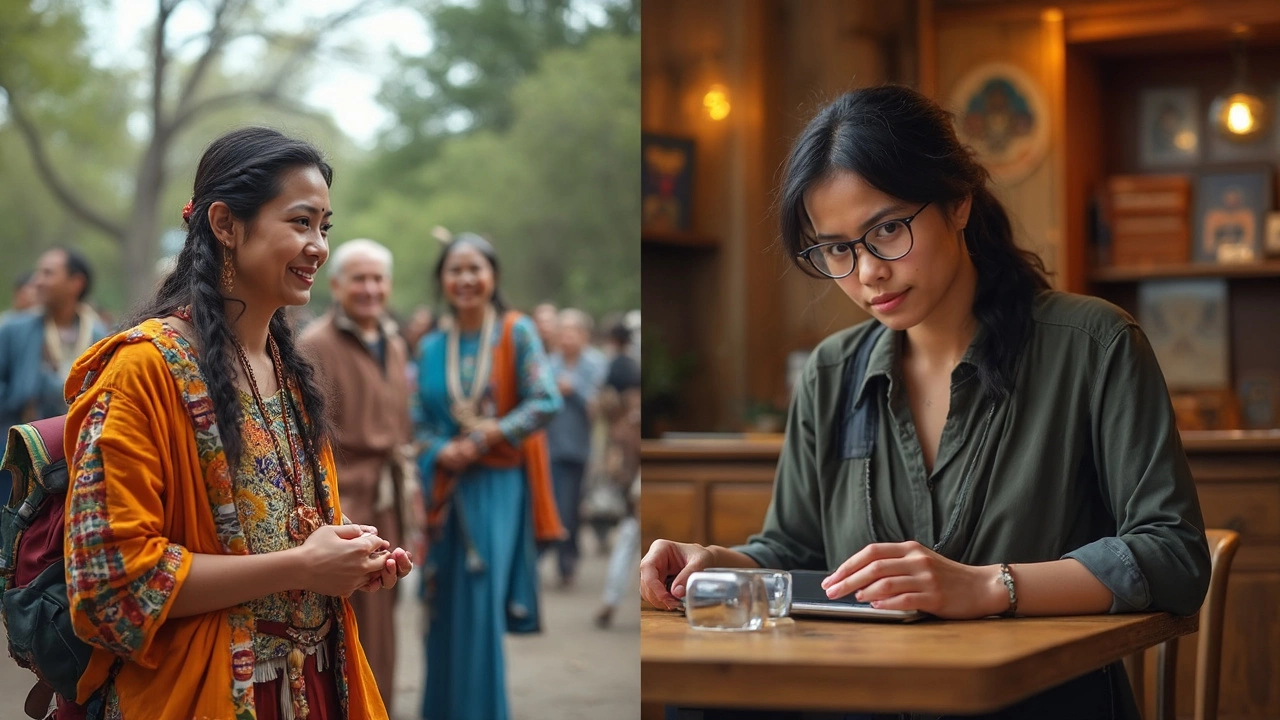Can You Sell Candid Photos? Legal Facts & Smart Tips
 Jun, 13 2025
Jun, 13 2025
You take a killer candid photo at a street festival—authentic expressions, lively energy, the kind of shot that tells a real story. But can you just slap a price tag on it and sell it online? The answer isn’t as clear as a camera lens after a rainstorm. In India, candid photography is huge, especially at weddings, events, and bustling city scenes. But before you start listing those shots for sale, there are a few things you really need to know.
First off: copyright. In India, you own the copyright to photos you click, even candid ones. That means you DO have the rights to sell them. But—and it’s a big but—once people’s faces are involved, especially in public settings, their privacy comes into play. It’s not about what you can shoot; it’s about what you can legally sell. If your candid photos show recognizable faces, you may need permission, especially for commercial use.
- What Are Candid Photos?
- Is It Legal to Sell Candid Photos in India?
- Permissions, Privacy, and Consent
- Where Can You Sell Your Candid Shots?
- Smart Tips for Candid Photo Sellers
What Are Candid Photos?
If you’ve ever checked out wedding albums or scrolled through Instagram, you’ve probably seen shots where people aren’t posing—they’re just living in the moment. That’s what candid photography is all about. These photos capture real emotions, reactions, and events as they happen, without people knowing they’re being photographed.
The magic? No fake smiles or stiff poses. It’s all natural: laughter at a family function, kids playing cricket on the street, or a street vendor shouting out deals. Candid photos pop because they show life as it’s actually happening. In India, this style has become crazy popular for weddings, parties, and even street photography projects.
One thing that makes candid photos stand out is timing. Photographers have to be super quick and alert, always ready to press the shutter. Good candid shots usually need:
- Natural light (flash can ruin the moment or alert people)
- Blend-in skills (so people act normal, not staged)
- Fast camera settings to catch motion and action
- Understanding of the scene so nothing important gets missed
Here’s how candid photos differ from regular posed shots in a nutshell:
| Basis | Candid Photos | Posed Photos |
|---|---|---|
| Awareness | Subject is usually unaware | Subject knows they’re being photographed |
| Expression | Natural, unplanned | Often rehearsed or directed |
| Popular Settings | Weddings, streets, events | Studio, formal events |
| Storytelling | Strong, real-life stories | Can feel artificial |
The whole point is to show life—messy, funny, joyful, and honest. In the world of candid photography in India, these moments are gold. Whether you’re snapping for fun or hoping to sell your work, knowing what makes a shot truly candid will make your photos stand out from the crowd.
Is It Legal to Sell Candid Photos in India?
When it comes to selling candid photography in India, the lines can honestly be a bit blurry. Legally, Indian copyright law has your back—if you took the photo, you’re the copyright owner. That gives you the base right to use, share, and even sell your images. But, before you get too excited, there’s another big legal piece: privacy and personality rights. If your candid photo shows someone who’s recognizable, things get trickier.
India doesn’t have a specific law just for photography, but here’s how things usually shake out:
- If you’re selling a candid photo just as an artistic piece (like prints, art shows, or photo books), you’re usually in the clear.
- For commercial use (such as ads or marketing), you’ll almost always need a signed model release if folks can be recognized. Businesses, especially, don’t want legal headaches over privacy claims.
Here’s a quick look at how rights and concerns line up:
| Usage Type | Legal Stance | What to Watch Out For |
|---|---|---|
| Personal/Portfolio | Allowed | Generally fine without consent if shot in public |
| Art Exhibit/Print Sales | Usually Allowed | Get permission if image is the main focus on one person |
| Commercial Uses (Ads, Products) | Not Allowed without consent | Model release strongly recommended |
| Editorial (News, Reports) | Often Allowed | Can be challenged if context is misleading or harmful |
One thing to remember: India’s Supreme Court has said that privacy is a fundamental right (the big Puttaswamy judgment in 2017). So someone unhappy about their candid snap being sold can actually challenge you, especially if the photo harms their reputation or wasn’t taken in public.
The bottom line? Take the photo—yes. Sell it? Depends how and where it’s used, and whether you’ve got the right permissions if faces are front and center. Got a market for your shots? Cool, but play it safe with written consent anytime it’s for ads or anything commercial.

Permissions, Privacy, and Consent
Here’s where things get real. In India, you own the copyright to your candid shots by default. But if those pictures have people’s faces—and most candid photography does—the rules get trickier. Indian law doesn’t let you publish or sell someone’s photo for commercial gain without their ok. That means a model release or written consent is a smart move, especially if you plan to license the image for ads, brands, or stock websites.
Say you shot a crowd at a Holi event and want to upload it to a stock photo site or sell it to a magazine. If faces are clearly visible, most legit platforms will demand consent forms from everyone who’s recognizable. No paperwork? No cash, usually. But for art purposes or street photography where you don’t make big money off someone’s likeness, people rarely bother, and it’s often tolerated. Still, privacy could become an issue if anybody complains.
Indian privacy law protects individuals against their image being used in a way that can cause harm, embarrassment, or commercial exploitation without permission. In 2017, the Supreme Court also set out the right to privacy as fundamental, so things aren’t as loose as before. The last thing you want is a legal notice from someone whose photo you snapped in traffic and sold to an ad agency.
- Always ask for consent if you plan to use someone’s image commercially—no shortcuts here.
- Paperwork helps: a simple release form, even on paper, can save you future headaches.
- Editorial or journalistic use has more leeway, but don’t push your luck—be ethical.
The bottom line? You may own the photo, but the person owns their face. When in doubt, get their okay, especially before you try to make money. It keeps your candid photography hustle legit and trouble-free.
Where Can You Sell Your Candid Shots?
Alright, let’s get to the stuff that pays: where do you actually sell your candid photos if you want to make some money? There’s no shortage of options, but the rules are different depending on what and how you’re selling.
You’ve probably heard about stock photo platforms. Sites like Shutterstock, Getty Images, and iStock let you upload candid images. But here’s the catch: if your photo shows recognizable people, they ask for a signed model release form. No release means the photo might get rejected or won’t be eligible for commercial use. Editorial use is a bit more flexible—these platforms might accept images for use in news or documentary content if you state they’re for editorial purposes only. Still, they’re strict about what counts.
If you want to stick to the Indian market, websites like Picsdream, ImagesBazaar, and Canvera focus on Indian themes and faces. Same deal—they’ll want permission from anyone clearly visible in your shot. Street photography groups on Facebook or Instagram can also help you find buyers, although you should double-check the privacy side before making sales.
Thinking about going direct? You could sell candid photography prints through your own website, or at local art fairs and photo exhibitions. No middlemen means you keep more of the profit, but you’ll still need permission if faces are central in the shot. Some photographers also reach out to magazines, newspapers, or even NGOs that need real-life images for campaigns and projects—editorial outlets care a lot about context and proper documentation.
- Stock platforms: Great for volume but picky about consent.
- Indian-focused sites: More local faces, same privacy rules.
- Social media & online groups: Good for getting noticed, but risky if you ignore consents.
- Your own website or offline sales: Full control, but you do the legwork (and paperwork).
- Media and NGOs: Focus on authenticity, so editorial use often trumps commercial use.
The bottom line is: there are plenty of places to sell, but always check if you need written permission. Ignoring this step can cost you sales—or worse, land you in hot water. Don’t leave that to chance.

Smart Tips for Candid Photo Sellers
Trying to earn from candid photos isn’t just about snapping great pictures; you’ve got to be smart with your approach. Here’s what works if you want to stay legal and actually see payment land in your account.
- candid photography with permission is your safest bet. If your shot clearly shows a person’s face, get written consent—either a quick paper release or a simple ‘okay’ via email or WhatsApp. No fuss, just proof if someone questions you later.
- Stick with brands and online platforms that accept candid shots and clearly say what kind of paperwork they want. Places like Shutterstock and Getty Images in India usually ask for a model release for any photo with a recognizable person.
- If you’re shooting in a private area—malls, clubs, or events—check the venue policy first. Some venues don’t allow commercial photography at all, even if the people are fine with it.
- Want to avoid headaches? Focus on street scenes or action shots where faces aren’t the focus, or where people aren’t easily recognizable. Environmental shots with backs or silhouettes usually fly under the radar for privacy laws.
- Build trust by watermarking your photos before sending proofs to buyers, especially if you’re using Instagram or WhatsApp to share previews. It’s a simple way to stop people from snatching your work and selling it themselves.
One more tip: Know your worth. Don’t undersell just because it’s candid. Lots of magazines, advertising agencies, and local stock sites are willing to pay well if you’ve got genuine, emotion-packed snaps. Just remember, legal hassles aren’t worth a few quick bucks—protect yourself first, then cash in.